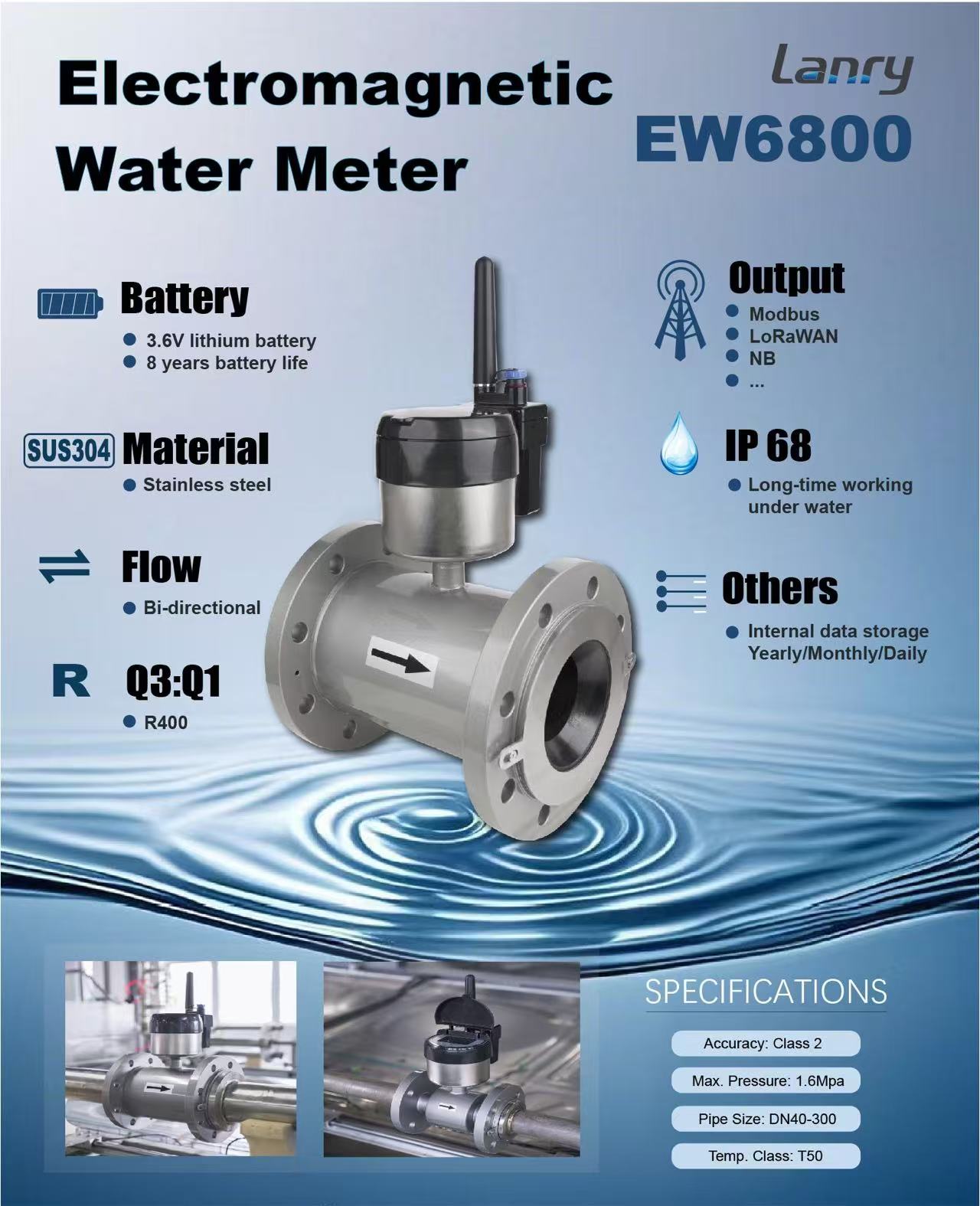

In the realm of water metering, ultrasonic water meters and electromagnetic water meters stand out as two prevalent types, each with distinct characteristics. These differences span across multiple aspects, including measurement principles, performance attributes, and application scenarios. A clear understanding of these disparities is crucial for users to make well - informed decisions.
Measurement Principles
Ultrasonic Water Meters
Ultrasonic water meters rely on ultrasonic waves to gauge water flow. They work by measuring the time difference between ultrasonic waves traveling downstream and upstream in the water. As the water's flow velocity affects the propagation speed of ultrasonic waves, this time difference can be translated into the water's flow velocity. By multiplying the velocity by the cross - sectional area of the pipe, the volume flow rate is obtained. This method is non - intrusive and immune to the presence of non - acoustic - absorbing impurities in the water.
Electromagnetic Water Meters
Electromagnetic water meters operate on the principle of Faraday's law of electromagnetic induction. When water, a conductive fluid, flows through a magnetic field, an electromotive force (EMF) is induced. The magnitude of this EMF is directly proportional to the flow velocity of the water. By accurately measuring this induced voltage, the flow velocity can be determined, and subsequently, the flow rate can be calculated. However, for this technology to function effectively, the water must possess a minimum level of electrical conductivity.
Performance Characteristics
Ultrasonic Water Meters
- Broad Measuring Range: Ultrasonic water meters are known for their wide measuring range. They can accurately measure flows from very low rates, often starting as low as 0.01 m/s, up to relatively high velocities. This wide range makes them ideal for detecting both small, continuous leaks and large - volume water usage.
- Low Pressure Drop: Since there are no moving parts within the meter body, ultrasonic water meters exhibit a very low pressure drop. This is highly beneficial in water distribution systems where minimizing energy losses due to pressure reduction is a priority.
- High Resistance to Impurities: These meters are not easily affected by the presence of sand, sediment, or small particles in the water. Their non - contact measurement method allows them to function accurately even in water with a high solid content.
Electromagnetic Water Meters
- Stable Performance at Medium to High Flows: While electromagnetic water meters may have limitations at extremely low flow rates, they offer excellent stability and accuracy for medium to high - flow applications. They can maintain a high degree of measurement precision over a wide range of flow conditions.
- No Mechanical Wear: Similar to ultrasonic water meters, electromagnetic meters have no internal moving parts. This absence of mechanical components subject to wear and tear ensures long - term reliability and consistent accuracy over extended periods of use.
- Susceptibility to Magnetic Interference: Electromagnetic water meters are sensitive to external magnetic fields. Proximity to strong magnetic sources, such as electric motors or transformers, can potentially disrupt the magnetic field within the meter and affect its measurement accuracy.
Application Scenarios
Ultrasonic Water Meters
- Industrial Applications: Their ability to handle a wide range of flows and resistance to impurities make ultrasonic water meters suitable for industrial settings. They can be used in factories with high - volume water consumption, as well as in processes where water quality may vary, such as in mining or food and beverage production.
- Residential and Commercial Buildings: Ultrasonic water meters are also commonly used in residential and commercial buildings. Their accuracy at low flow rates is beneficial for accurately measuring the water consumption of individual households or small businesses, even during periods of low - volume usage.
Electromagnetic Water Meters
- Water Utilities: Electromagnetic water meters are widely used by water supply companies for large - scale metering. Their stability at medium to high flows makes them ideal for measuring the water volume delivered to major industrial customers or for monitoring the overall water distribution network.
- Process Industries with Conductive Fluids: In industries where the water or fluid being measured has a high conductivity, such as in some chemical processing plants, electromagnetic water meters provide highly accurate and reliable flow measurement.
Cost and Installation Considerations
Cost
Generally, electromagnetic water meters tend to be more expensive than ultrasonic water meters. This is due to the complex manufacturing processes involved in creating the precise magnetic field components required for their operation. Ultrasonic water meters, on the other hand, are often more cost - effective, making them an attractive option for applications where budget constraints are a factor.
Installation
- Ultrasonic Water Meters: These meters can be installed in various orientations, including horizontal, vertical, or inclined, providing flexibility in installation. However, proper alignment and positioning are still necessary to ensure accurate measurement. They also require protection from physical damage and environmental factors.
- Electromagnetic Water Meters: Installation of electromagnetic water meters typically requires a straight - pipe section both upstream and downstream of the meter. This is to ensure a uniform flow profile and accurate measurement. They also need to be installed away from strong magnetic fields to avoid interference.
In summary, ultrasonic water meters and electromagnetic water meters each have their own set of advantages and limitations. The choice between the two depends on factors such as the nature of the water being measured, the required accuracy, the flow range, and the specific application requirements. By carefully evaluating these factors, users can select the most appropriate water meter for their needs.
Post time: Apr-17-2025

